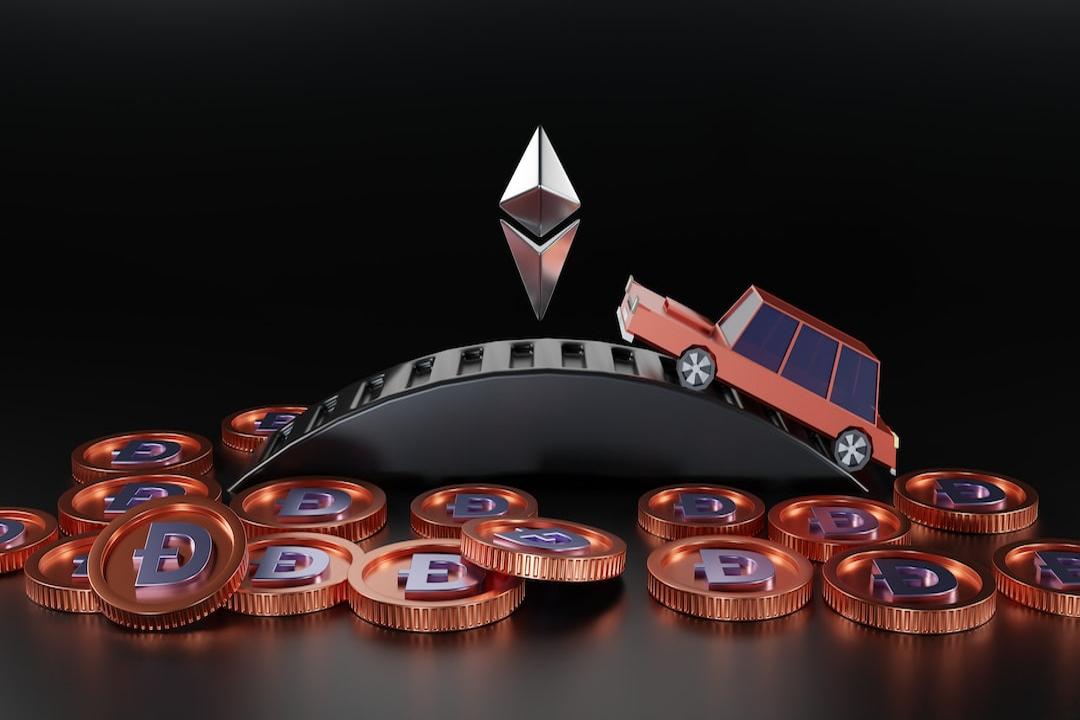Modular blockchain enhances system flexibility and scalability, providing a robust foundation for future innovations in blockchain technology. This article, originating from Hotcoin, is compiled, translated, and authored by ChainCatcher.
(Previous context: Modular blockchain Avail opens up airdrop applications! Over 350,000 wallets eligible, key details in one look )
(Background supplement: In-depth analysis: Ethereum vs. the endgame of modular blockchains )
Table of Contents I. Overview of Modular Blockchain Introduction to Modular Blockchain Definition of Modular Blockchain Characteristics of Modular Blockchain II. Classification and Principles of Modular Blockchain Consensus Layer Data Availability Layer (DA Layer) Execution Layer Settlement Layer III. Current Development and Representative Projects of Modular Blockchain Top 10 Market Cap Modular Blockchain Tokens: Fuel Avail Eclipse IV. Risk and Challenge Analysis of Modular Blockchain
- Lack of unified standards affecting compatibility and interoperability
- Functional fragmentation increases systemic risks
- Updates and maintenance may introduce new risk issues
- Conflict of interest with monolithic blockchains V. Prospects for the Future Development of Modular Blockchain
- Enhancing blockchain network flexibility and scalability
- Lowering thresholds and costs for application development
- Accelerating standardization and normalization processes
- Promoting cross-industry integration and innovation
The narrative on modular blockchain stems from the impressive performance of Celestia and its token TIA. Modularization is indeed a primary development direction and trend for future blockchain designs. Modular blockchain, like LEGO bricks, breaks down blockchain systems into reusable modules, allowing for customized combinations to achieve different functionalities in blockchain networks. This flexibility and customization provide new perspectives and solutions for the development and deployment of blockchain applications.
Traditional monolithic blockchains integrate core functionalities (execution, settlement, consensus, data availability) into a single network, leading to scalability issues. For instance, networks like Ethereum and Solana require each node to store complete blockchain data and validate every transaction. While this design ensures network security and decentralization, it also causes performance bottlenecks as blockchain sizes grow over time, increasing the data load nodes must handle. This affects scalability and efficiency.
The concept of modular blockchain originated from research and exploration of the Ethereum network. In 2018, Celestia co-founder Mustafa Albasan and Ethereum founder Vitalik co-authored a paper titled “Data Availability Sampling and Fraud Proofs,” which proposed modular blockchain as a solution to scalability issues without compromising network security and decentralization.
Modular blockchain decomposes the blockchain system into multiple independent modules and standardizes communication and collaboration between modules through well-defined interfaces and protocols. By adopting a separation strategy, it splits core functionalities like execution, settlement, consensus, and data availability into independent modules, each responsible for specific functions or business requirements. Through modular design, a stack structure of interdependent modules can be selectively deployed and updated according to actual needs, thereby enhancing system flexibility and customization.

Modular Blockchain emphasizes extensibility, adopting a decentralized architecture that divides the system into multiple modules. Each module can be independently deployed and scaled, enabling horizontal scalability. When the system needs to handle more transactions or data, increasing corresponding modules enhances throughput and performance without requiring a full system upgrade.
Flexibility is achieved by selectively deploying and updating different modules based on specific needs. For instance, financial applications may deploy modules specialized in payments, while supply chain applications may opt for modules focused on logistics, customizing blockchain systems according to diverse business requirements.
Composability is enabled through well-defined interfaces and protocols, facilitating efficient communication and collaboration between modules. This allows different modules to integrate and interact, enabling complex business logic and functionalities. For example, combining identity verification modules with smart contract execution modules can achieve identity-based permission management, enhancing system security and credibility.
Ease of maintenance is enhanced because Modular Blockchain divides the system into independent modules, each responsible for specific functions or business needs. This structure facilitates easier module maintenance and updates, reducing maintenance costs and risks associated with system-wide upgrades.
Modular Blockchain focuses on handling specific responsibilities, outsourcing other aspects to independent layers of blockchain. Its core lies in modular design principles, splitting the blockchain system into distinct modules that handle specific functions. Understanding how Modular Blockchain operates requires knowledge of the layered structure of blockchain systems, including consensus, data availability, execution, and settlement layers.
The consensus layer, a foundational component, ensures consistency across all nodes and facilitates efficient block addition and transaction sequencing using different consensus algorithms tailored to solve double-spending issues and ensure consistency in the network.
The data availability layer guarantees data availability, enabling the execution and settlement layers to function independently. In this layer, all original transactions of the execution layer must be stored to validate transaction validity in the settlement layer.
The execution layer executes smart contracts and processes transactions, serving as the deployment site for various user applications. Execution results of smart contracts are proven and submitted to the settlement layer, updating user and chain states.
For example, the Modular Rollup solution Manta Pacific addresses data availability issues through modular infrastructure, seamlessly integrating modular DA and zkEVM. As an Ethereum Layer2 solution, Mantle collaborates with EigenDA to provide low costs and high security, leveraging Ethereum’s security.
The settlement layer provides comprehensive consensus and security, verifying the correctness of execution layer results and updating user and chain states. Different consensus mechanisms ensure the security and reliability of the entire blockchain network, with increased node count enhancing settlement layer security.
For instance, dYmension serves as a settlement layer modular platform, supplying all necessary tools and infrastructure for Cosmos ecosystem Rollups.
This modular approach in blockchain architecture enhances scalability, flexibility, composability, and maintenance efficiency, catering to diverse application needs across various industries.
 As of May 8th, RootData has recorded a total of 50 modular blockchain projects, out of which 10 have launched their own coins. According to publicly available funding data, the financing for modular blockchain projects has exceeded $350 million in 2024 so far.
As of May 8th, RootData has recorded a total of 50 modular blockchain projects, out of which 10 have launched their own coins. According to publicly available funding data, the financing for modular blockchain projects has exceeded $350 million in 2024 so far.
Additionally, according to CoinGecko data as of May 8th, the market capitalization of tokens from modular blockchain projects surpasses $3 billion, with a 24-hour trading volume exceeding $230 million.
In addition, notable upcoming modular blockchain projects include Fuel, Avail, and Eclipse.
Fuel is a modular execution layer based on UTXO, bringing globally accessible scalability to Ethereum. As a modular execution layer, Fuel achieves universal throughput in ways a single-chain cannot, while inheriting Ethereum’s security. John Adler, co-founder and former CTO of Celestia, is also a co-founder of Fuel. According to official announcements, Fuel’s mainnet is scheduled for launch in Q3 2024. In the coming weeks, the Fuel team will share more detailed information about Fuel’s unique architecture, product roadmap, and release plans.
Avail focuses on data availability in a modular blockchain: sorting and recording blockchain transactions without the need to download entire blocks to prove data availability. This enables scalability beyond what a single-chain blockchain can achieve. Avail spun off from Polygon in March 2023, led by Polygon co-founder Anurag Arjun. On February 26, 2024, Avail announced completing a $27 million seed round, with Founders Fund and Dragonfly leading, along with SevenX Ventures, Figment, Nomad Capital, and angel investors including former Coinbase CTO Balaji Srinivasan, Osmosis co-founder Sunny Aggarwal, Polygon’s Chief Information Security Officer Mudit Gupta, and AltLayer COO Amrit Kumar.
Eclipse is a customizable rollup providing frameworks compatible with multiple Layer 1 blockchains. This platform allows developers to deploy their own Solana-supported rollups using any chain for security or data storage. Neel Somani, a founder of Eclipse, previously worked at Airbnb, Two Sigma, and Oasis Labs, and graduated from the University of California, Berkeley. In March 2024, Eclipse completed a $50 million Series A funding round, led by Placeholder and Hack VC, bringing its total funding to $65 million. Eclipse plans to launch its mainnet in Q2 2024, having already released development and testnet versions of its protocol.
Modular blockchain, as a new architectural design concept, is currently in its early stages of development, facing a series of risks and challenges.
The development of modular blockchains lacks unified standards, potentially affecting compatibility and interoperability between different platforms. This lack of standardization could limit overall system efficiency and scalability. Additionally, the lack of unified standards may pose technical challenges and obstacles for developers.
Modular blockchain systems decompose various functional modules in the blockchain network, providing each module with independent functions and responsibilities. However, this layered functional independence may increase systemic and security risks. Each module’s independence implies potential single points of failure, affecting the overall stability and security of the system.
Modular blockchain systems require continuous updates and maintenance to adapt to evolving market demands and technological advancements. However, the update and maintenance process may introduce new risks and issues, impacting the normal operation of the system. For example, updates may lead to system instability or introduce new security vulnerabilities and privacy concerns, posing risks and challenges to the blockchain network.
There may be conflicting interests between modular blockchains and monolithic blockchain networks like Ethereum. For instance, as one of the most influential and user-base-rich public chains, the emergence of modular blockchains may impact Ethereum’s ecosystem, leading to conflicts of interest and increased competition.
As a new design concept, modular blockchains are poised to make breakthroughs and advancements in multiple aspects, holding significant meaning and vast development prospects.
Modular blockchains decompose various functional modules within the blockchain network, making the network more flexible and scalable. In the future, with the continuous improvement and application of modular blockchain technology, we foresee blockchain networks becoming more flexible, allowing for customized configurations according to different needs and scenarios, better meeting various application demands, and enabling larger-scale deployment.
The development of modular blockchains will promote the vibrant growth of the blockchain ecosystem. Through modular design, blockchain networks can better support developers in application development and deployment, lowering the barriers and costs of application development, thus attracting more developers and innovators to join the blockchain ecosystem. In the future, with the growing blockchain ecosystem, we anticipate more innovative applications emerging, offering users richer and more convenient blockchain services and experiences.
With the development of modular blockchains, we anticipate the promotion and acceleration of blockchain standardization and normalization processes. By establishing unified standards and norms, not only can compatibility and interoperability between different platforms be enhanced, but also the costs of system development and maintenance can be reduced, promoting the widespread application and adoption of blockchain technology.
The development of modular blockchains will drive the cross-domain integration and innovation of blockchain technology with other front-end technologies. Through modular design, blockchain networks can better integrate with technologies such as artificial intelligence, Internet of Things, and big data, forming more powerful and complex application scenarios. In the future, with the cross-domain integration and innovation of blockchain technology, we anticipate the emergence of more new application scenarios.
As an emerging design paradigm, modular blockchains enhance the scalability, flexibility, composability, and ease of maintenance of systems, opening up new possibilities for the further development and application of blockchain technology. They provide a more robust and flexible infrastructure for digital economy and blockchain network construction, bringing new possibilities for innovation in broader fields.

 As of May 8th, RootData has recorded a total of 50 modular blockchain projects, out of which 10 have launched their own coins. According to publicly available funding data, the financing for modular blockchain projects has exceeded $350 million in 2024 so far.
As of May 8th, RootData has recorded a total of 50 modular blockchain projects, out of which 10 have launched their own coins. According to publicly available funding data, the financing for modular blockchain projects has exceeded $350 million in 2024 so far.



